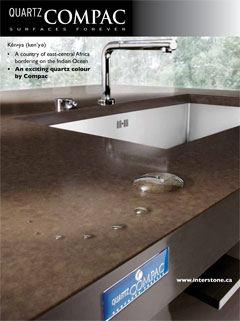Origins of Marble's "Sparkle and Shine”

Since the days of Greek and Roman civilization, marble has been used as a medium in art sculpture and architecture as a symbol of refined taste, tradition and luxury. It has long been known for its beauty and classy feel which makes a marble countertop an elegant solution for homes. Even the word marble has its roots in the Greek word "marmaron,” meaning "to flash, sparkle and gleam.” Given the interlocking mosaic of carbonate crystals, the origin of the name is not surprising. Marble was quarried by the Greeks and Romans and used often, usually to build columns, floors and counters and was a favourite medium for sculptors – especially the rare and exotic white marble which was softer and more malleable. White marble is said to be the most pure and was used by the artist Michelangelo to create a number of famous statues. Most of the marble he used was found in Carrara, Italy, so it is not surprising white marble is also known as "Bianco Carrara.” It is common to name manufactured tiles and slabs of marble from where they have history and origin.
The Natural Beauty of Impurity and Imperfection
Marble's natural beauty lies in the swirling crystalline patterns within the glossy coloured stone. There are many varieties of marble, with different patterns and colours that can suit every individual taste. How are these unique patterns made? Naturally of course! Various mineral impurities affect the limestone during its metamorphosis from limestone to travertine to marble caused by heat and pressure. The swirling patterns are due to clay, silt, sand, iron oxides or chert, (a rusty red or brown sedimentary rock.) Marble is found in many countries, especially in Europe. Given each area's different geological make-up, there are varying different colours and patterns of marble quarried in Belgium, France, Great Britain, Greece, India, Italy and Spain.
Countertop Marble Care and Maintenance
Selecting the right marble for your counter top needs depends on a variety of factors. The requirements of the job will determine what type of marble pattern to choose. Designs with more complicated cuts will drive prices higher – so selecting the right looking marble combined with the right price will be a consideration. There are many different design aspects such as the number of sinks and faucet designs. Some counters have stove tops built into the counter and other designs that may need special cuts.
Marble has a shiny and glossy finish, highlighting its perfect imperfections. It is a very hard material making it great to use on floors, countertops, walls and mantle pieces. However, marble is a highly porous material, despite its density, and as a result is not often used in high traffic areas as its shine can become dull or even chip and crack with frequent use. Simple maintenance and care of the marble countertop can prevent wear and tear that damage can cause. Simple kitchen spills, especially acidic liquids such as ketchup and vinegar, can affect the marble counter's shine without proper sealing and maintenance. Clean up spills immediately to help avoid damage.